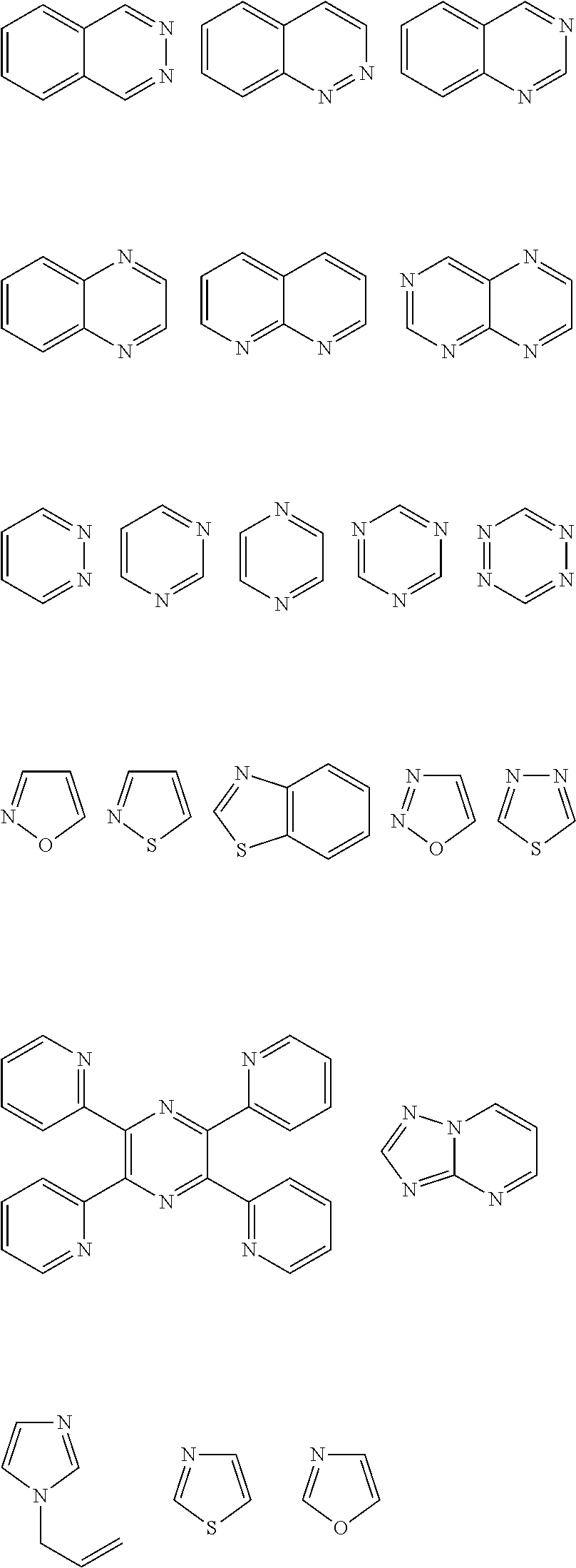Functionalized polymers and processes for making same
a technology of functionalized polymers and polymers, applied in the field of functionalized polymers and processes for making same, can solve the problems that the functionalities that can be incorporated into polymers prepared by one of these processes often cannot be incorporated into polymers prepared by the other type, and achieve the effects of improving abrasion and fatigue resistance, improving tensile properties, and reducing hysteresis loss
- Summary
- Abstract
- Description
- Claims
- Application Information
AI Technical Summary
Benefits of technology
Problems solved by technology
Method used
Image
Examples
examples
[0132]In the examples, dried glass vessels previously sealed with extracted septum liners and perforated crown caps under a positive N2 purge were used for all preparations. Commercially available reagents and starting materials included the following, all of which were acquired from Sigma-Aldrich Co. (St. Louis, Mo.) and used without further purification unless otherwise noted in a specific example: phthalazine (98% purity), pyridazine (98% purity), pyrimidine (99% purity), and 1,3,5-triazine (97% purity).
[0133]For Examples 1-9, butadiene solution (in hexane), styrene solution (33% in hexane), hexane, n-butyllithium (1.60 M in hexane), 2,2-bis(2′-tetrahydrofuryl)propane (1.60 M solution in hexane, stored over CaH2), and butylated hydroxytoluene (BHT) solution in hexane were used.
examples 1-3
[0134]To a N2-purged reactor equipped with a stirrer was added 1.62 kg hexane, 0.41 kg styrene solution, and 2.45 kg butadiene solution (22.2% by wt. in hexane). The reactor was charged with 3.27 mL n-butyllithium, followed by 1.0 mL 2,2-bis(2′-tetrahydrofuryl)-propane solution. The reactor jacket was heated to 50° C. and, after ˜27 minutes, the batch temperature peaked at ˜61° C.
[0135]After an additional ˜30 minutes, polymer cement was transferred from the reactor to dried glass vessels. A control (example 1) was terminated with isopropanol. Two others were functionalized with phthalazine solution (1.0 M in toluene / THF), one at molar ratio of functionalizing agent-to-initiator of 1:2 (example 2) and another at a molar ratio of 1:1 (example 3). The three vessels were placed in a 50° C. bath for ˜30 minutes.
[0136]The samples then were quenched by addition of ˜1.5 mL isopropanol prior to addition of 3 mL of di-t-butyl-p-cresol antioxidant solution (2% by wt. in hexane). All samples we...
examples 4-6
[0138]To a N2-purged reactor equipped with a stirrer was added 1.31 kg hexane, 0.41 kg styrene solution, and 2.76 kg butadiene solution (19.7% by wt. in hexane). The reactor was charged with 3.0 mL n-butyllithium, followed by 1.1 mL 2,2-bis(2′-tetrahydrofuryl)-propane solution. The reactor jacket was heated to 50° C. and, after ˜25 minutes, the batch temperature peaked at ˜64° C.
[0139]After an additional ˜30 minutes, polymer cement was transferred from the reactor to dried glass vessels. A control (example 4) was terminated with isopropanol. Two others were functionalized with pyridazine solution (1.0 M in toluene), one at molar ratio of functionalizing agent-to-initiator of 1:2 (example 5) and another at a molar ratio of 1:1 (example 6). The three vessels were placed in a 50° C. bath for ˜30 minutes.
[0140]The samples then were quenched by addition of ˜1.5 mL isopropanol prior to addition of 3 mL of di-t-butyl-p-cresol antioxidant solution (2% by wt. in hexane). All samples were coa...
PUM
| Property | Measurement | Unit |
|---|---|---|
| aromatic | aaaaa | aaaaa |
| ring structure | aaaaa | aaaaa |
| resistance to abrasion | aaaaa | aaaaa |
Abstract
Description
Claims
Application Information
 Login to View More
Login to View More - R&D
- Intellectual Property
- Life Sciences
- Materials
- Tech Scout
- Unparalleled Data Quality
- Higher Quality Content
- 60% Fewer Hallucinations
Browse by: Latest US Patents, China's latest patents, Technical Efficacy Thesaurus, Application Domain, Technology Topic, Popular Technical Reports.
© 2025 PatSnap. All rights reserved.Legal|Privacy policy|Modern Slavery Act Transparency Statement|Sitemap|About US| Contact US: help@patsnap.com



